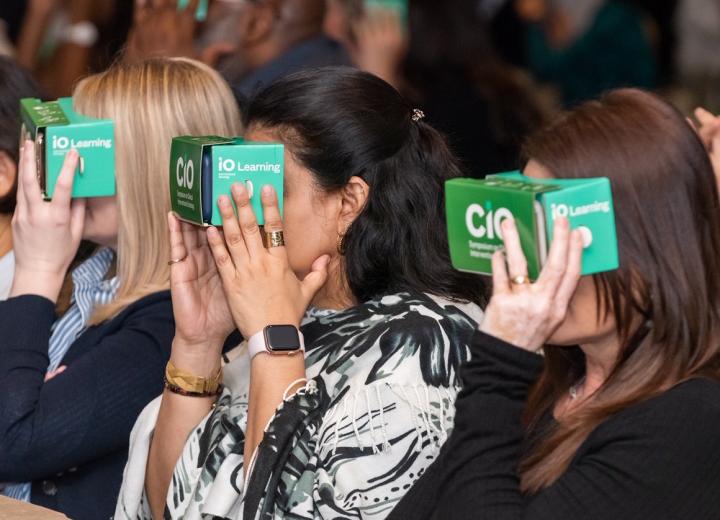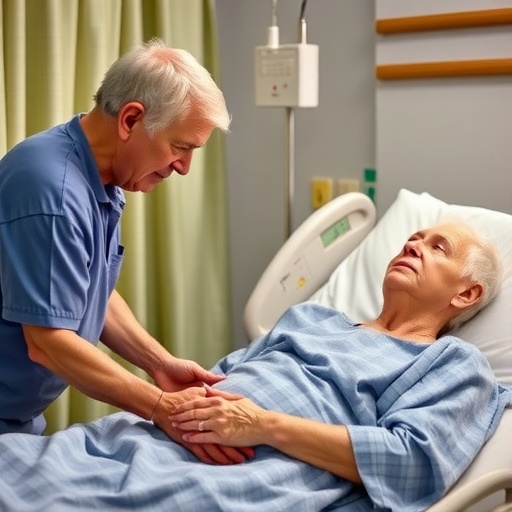Just one example of VR’s potential to improve training, patient care

Credit: UVA Health
A UVA Health interventional radiologist has harnessed the power of virtual reality to increase the availability of a less-invasive treatment option for thyroid patients.
Partly backed by a grant from UVA’s Office of Graduate Medical Education, UVA’s Ziv Haskal, MD, has created a 11-minute virtual-reality experience as another step in the VR studio he is developing for the university and a series of high-tech educational materials for physicians, trainees and patients alike.
Haskal thinks VR offers physicians a better way to learn and can accelerate the adoption of new, cutting-edge procedures, making the latest advances available to patients more quickly.
Using VR For Deeper Understanding
Haskal debuted his educational video featuring Auh Whan Park, MD, treating benign thyroid nodules with ablation to around 200 physicians wearing VR headsets at the Symposium on Clinical Interventional Oncology in Miami last weekend.
Thermal ablation of benign thyroid nodules is a less-invasive procedure that uses heat delivered by a special probe to shrink common non-cancerous lumps in the thyroid. Compared with open surgery, ablation produces less scarring, is less disfiguring, has a shorter recovery time, and may be more likely to protect the functioning of the thyroid. The procedure is widely performed outside the U.S., and UVA is pioneering the procedure’s use in the U.S. At this time, the procedure is not typically covered by insurance.
Haskal hopes that the 360-degree video, supplemented by inset videos, close-ups, educational materials and animations, will heighten physicians’ awareness and interest in performing the procedure.
“The VR experience uniquely places the viewer into the room right next to the operator,” Haskal said. “I want interventional radiologists to say, ‘I can see myself doing this.’ Patients already come from across the country for thyroid ablation. UVA can also be the training center for physicians to learn how to do this procedure.”
How VR Can Improve Care
Along with providing more in-depth introductions and training tools for physicians and medical students, Haskal believes his goal of establishing a VR studio at UVA can provide broader benefits in healthcare. For instance, he is beginning to test VR videos designed to ease patients’ anxiety before they undergo interventional radiology procedures.
“This technology has incredible potential to improve care, whether it is by better training doctors to perform procedures or helping patients know what to expect when they arrive at the hospital,” Haskal said.
###
Media Contact
Eric Swensen
[email protected]
434-924-5770
Original Source
https:/




